|
Jungtinė Europos Krikščionija
| |
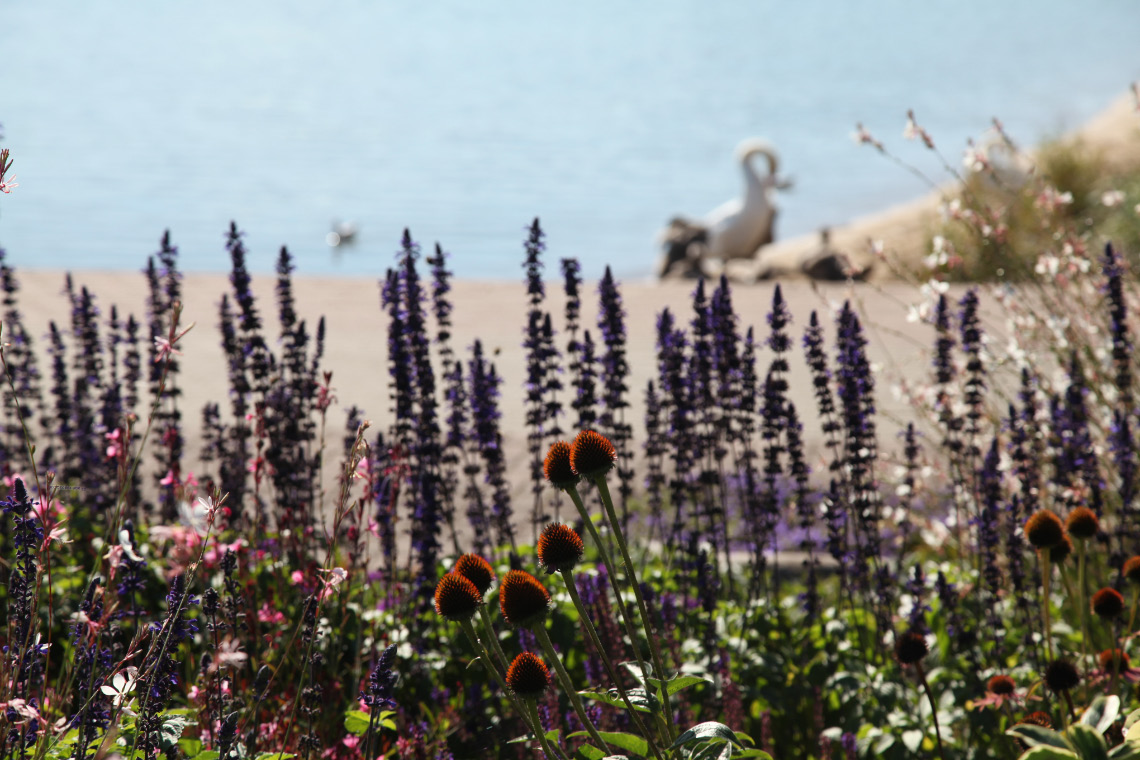 |
|
| |
|
|
| |
Ši šalių, kurių teritorijos ir tautos yra sudedamosios dalys Jungtinių Europos Krikščionijos skirtas būti faktinės, o ne smerkimo sąrašas. Ji atstovauja kurios teritorijos yra dalis Europos Krikščionijos, o ne kurios teritorijos turėtų būti. Tai nėra tokio pat dydžio Bažnyčiai. Bažnyčia yra visuotinė ir amžina. Jungtinės Europos Krikščionijos gali užimti 48 proc žemės paviršiaus Žemėje. Tai gali apimti maždaug 1,200,000,000 žmonių, kurie pagaminti iš 40,238,403,000,000 JAV dolerių BVP 2012 m dvylikos mėnesių (maždaug 56 procentų Pasaulio visas) gyventojų. Tai gali ištverti kaip 50,000 metų civilizacijos ar net mažiau nei tą dienų skaičių. Visais atvejais Jungtinė Europos Krikščionijos bus nei universalus, nei amžina. Dievo malonė, Europos Krikščionijos nėra net sutampa su Krikščionijos. Daug žmonių iš kitų civilizacijų yra krikščionių, o gal geriau krikščionys — ir arčiau Dievo — nei daugelis kitų žmonių, per Europos Krikščionijos. Tos šalys, kurios įtrauktos į sąrašą, yra tie, kurių populiacijos (I) istoriškai buvo, aiškia balsų dauguma, tiek etniškai Europos ir krikščionių — Krikščionių per krikštą ir nuteisimo ir savęs identifikavimo — ir (ii) šiuo metu yra gyvenamas, ir vėl aiškia balsų dauguma, kurią Europos Krikščionijos palikuonių. Daug buvo ir bus pasakyta ir parašyta apie žodžių ir sąvokų ankstesniame sakinyje. Kai diskusija ir, tikiuosi, kai įžvalgos taip pat bus įtraukti į filmą, Jungtinė Europos Krikščionijos – Gydykite Schizmos Dabar, bet filmas yra daugiausia apie pakartotinio susivienijimo Bažnyčios. |
|
| |
|
|
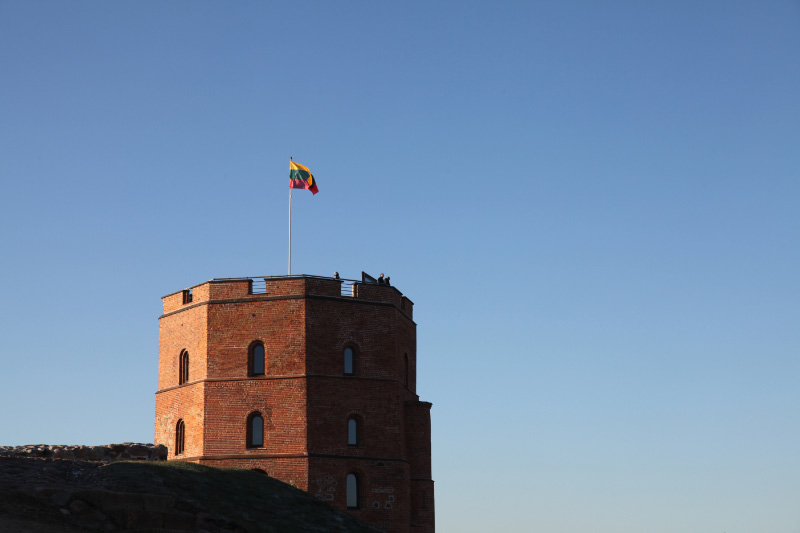 |
|
|
| Gedimino pilies bokštas – Gediminas' Tower (completed 1409) atop the Upper Castle complex (built 9th through 15th centuries) in Vilnius |
|
|
|
|
|
| |
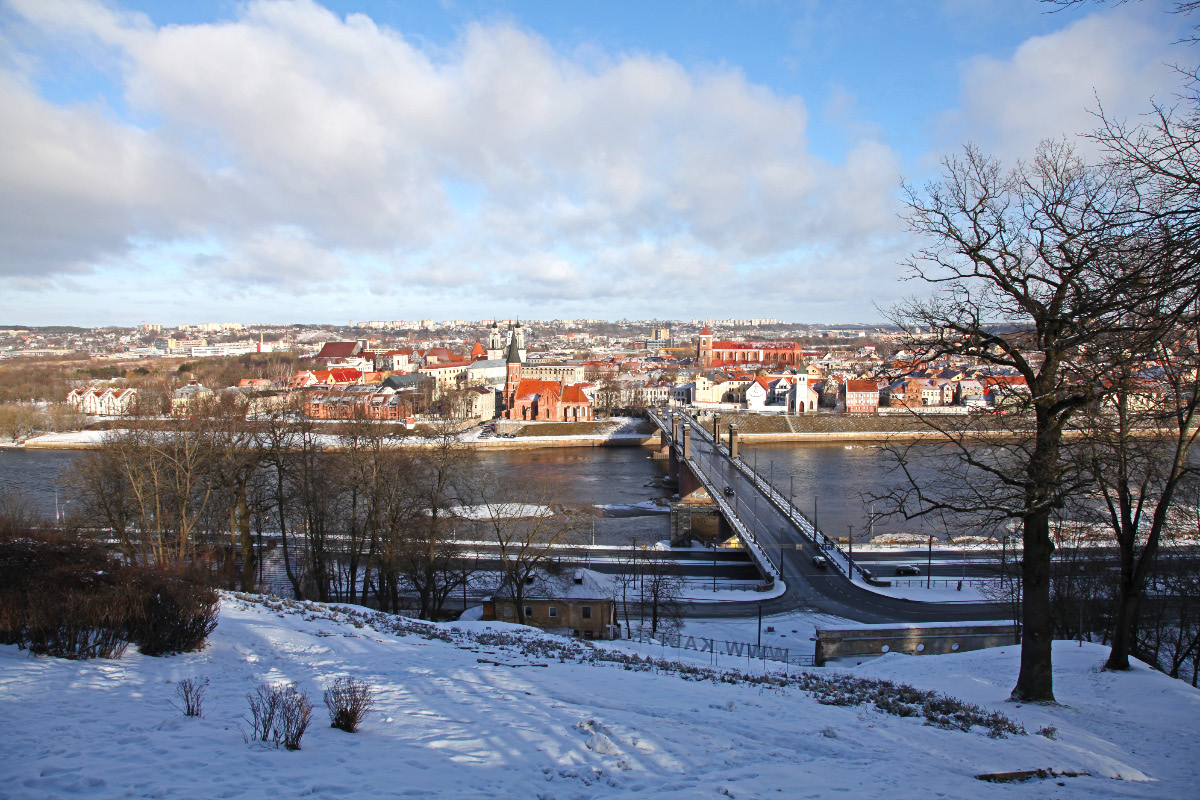 |
|
| |
Across the Vytautas' Bridge and the Nemunas River to the Old Town of Kaunas on 8 February 2015
When Napoleon's Grand Army passed through Kaunas going to and returning from Moscow, they devastated Kaunas both times.
Yet amazingly, Lithuania never asked for or was offered reparations. Earlier, in 1807, Napoleon and Tsar Alexander I met
on the Nemunas River, a.k.a., the Neman, Nyoman, Niemen and Memel, on a raft to sign the Treaty of Tilsit.
And of course the Nemuns River under that name Memel is the river of Von der Maas bis an die Memel fame.
|
|
| |
|
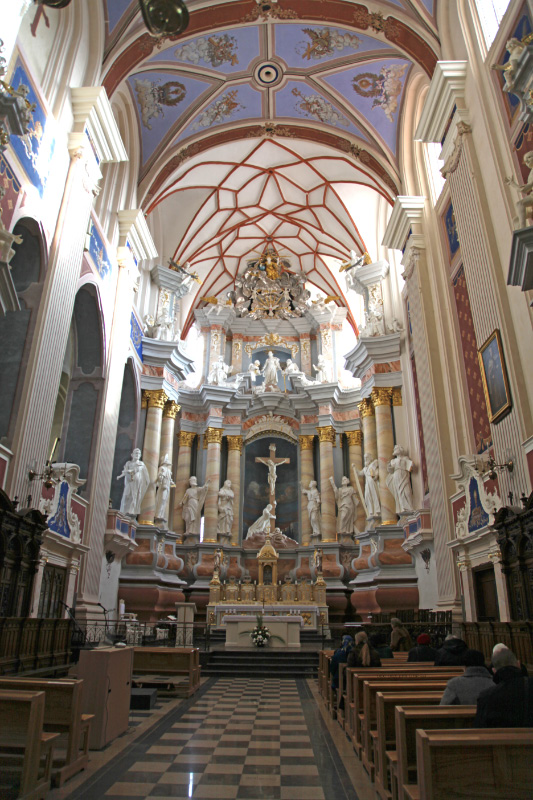 |
| |
|
Kauno Šv. apaštalų Petro ir Povilo arkikatedra bazilika – Kaunas Cathedral Basilica
First extant written sources mention in this cathedral in 1413, the very existence of
which undermined further any legitimacy to the position of the Teutonic Knights in the
Polish–Lithuanian–Teutonic War (1409 - 1411), but of course this is late medieval history. |
| |
|
|
| |
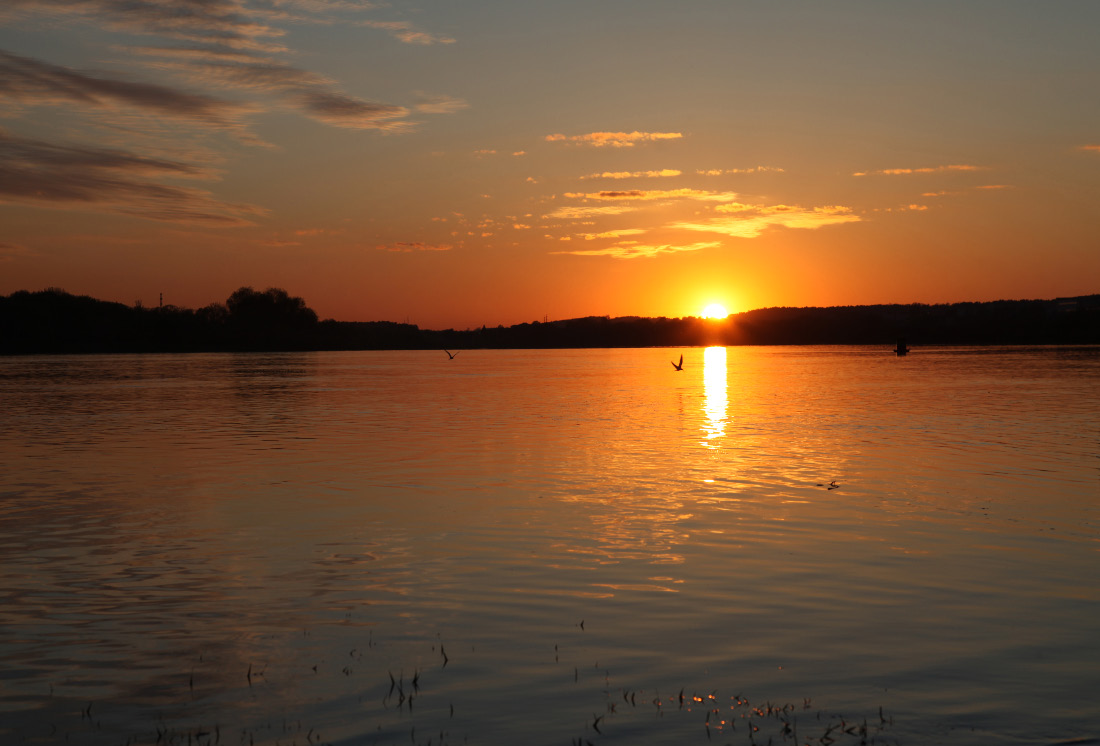 |
|
| |
Where the very tip of the old town of Kaunas divides the Nemunas – Memel – Рака Нёман (viewer's left) from the Neris – Рака Вілія (viewer's right), the two most important rivers of Lithuania, here on 12 May 2017. |
|
| |
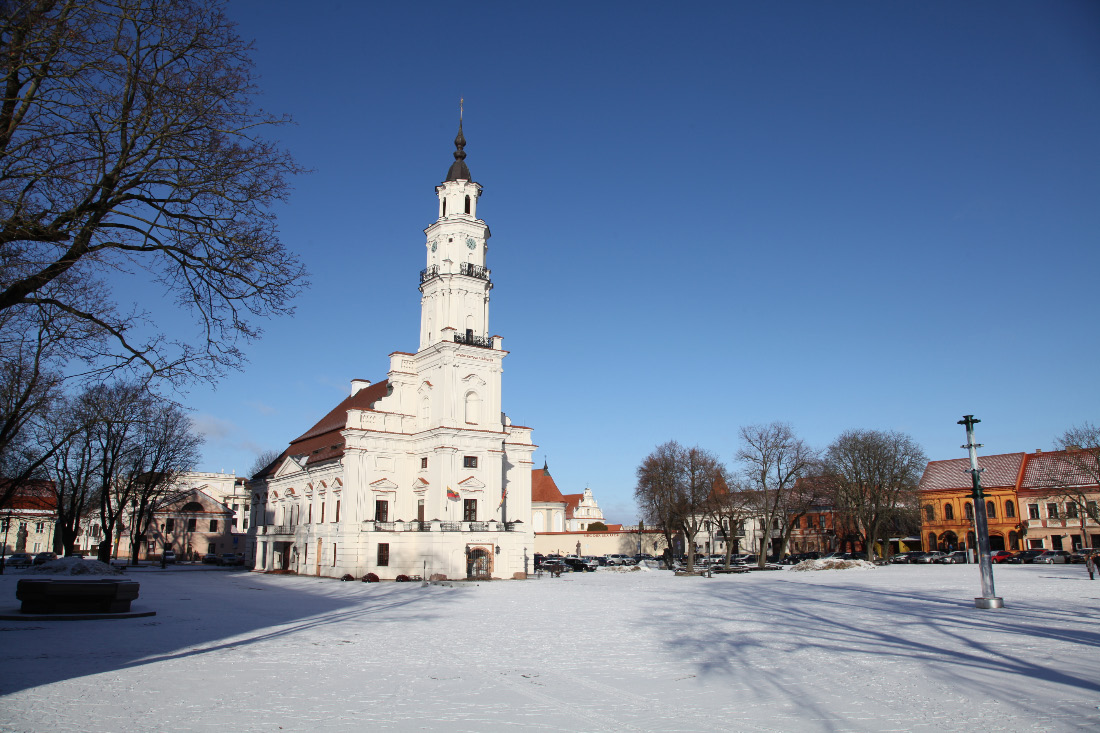 |
|
| |
Kauno Rotušės Aikštė – Kaunas Town Hall Square with the Kauno Rotušė – Town Hall of Kaunas, begun in 1542 |
|
| |
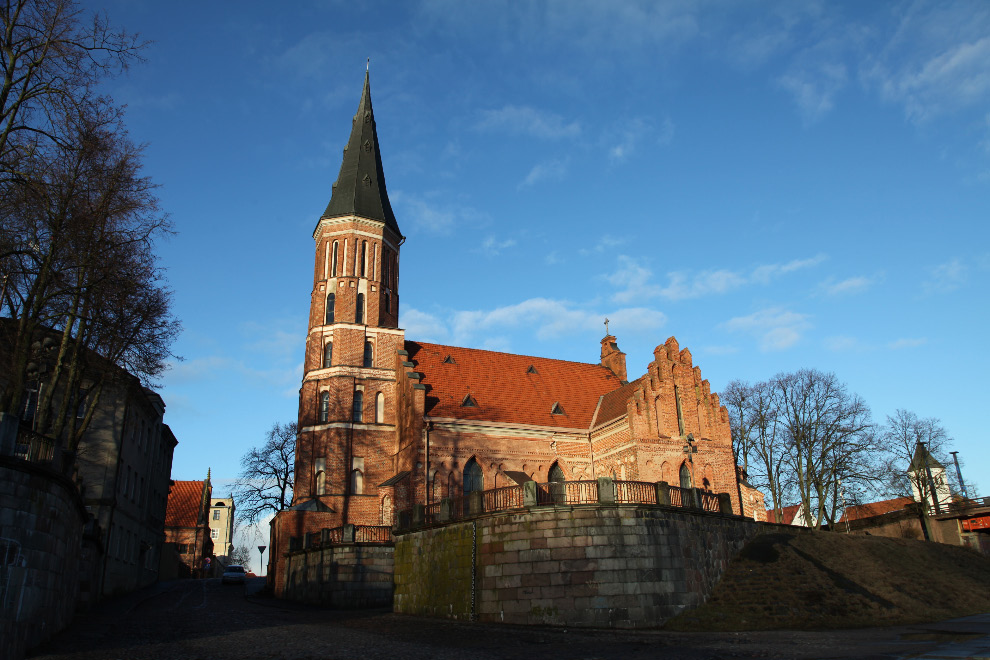 |
|
| |
Vytautas' the Great Church of the Assumption of The Holy Virgin Mary – Vytauto Didžiojo Mergelės Marijos ėmimo į dangų bažnyčia |
|
|
|
|
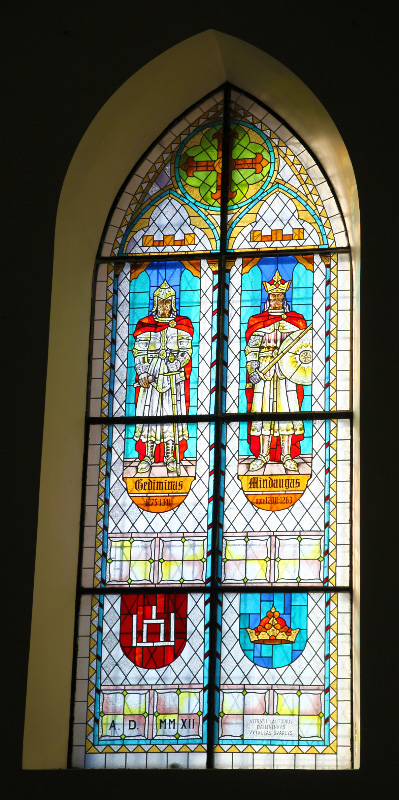 |
|
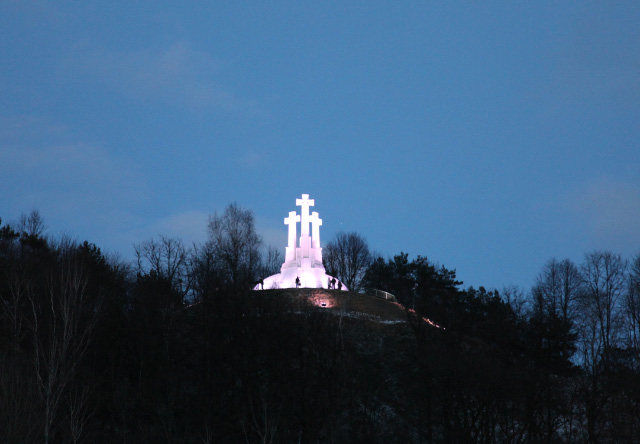
After long-standing wooded crosses collapsed in 1869, tsarist authorities forbade their being rebuilt, though eventually concrete crosses were built in 1916, then again torn down by orders from Bolshevik Moscow in 1950. The current Three Crosses devotional monument was built in Vilnius only in 1989. But the story of this devotion goes back many centuries further, to Gediminas (* c. 1275, r. as Grand Duke from c. 1315 to † December 1341) and the story of Gediminas' murder of two Franciscan friars, Ulrich and Martin around 1340. |
Gediminas (* c.1275, r. as Grand Duke from c. 1315 to † December 1341), was the founder of the Lithuanian Gediminids Dynasty (Gediminaičiai – Giedyminowicze – Гедиміновичі – Гедзімінавічы – Гедиминовичи), which ruled vast lands through Ruthenia, Poland and Belarus and further south to the Black Sea from c. 1315 through its final King of Poland and Grand Duke of Lithuania, Sigismund (Zygmunt – Żygimont – Žygimantas) II Augustus, r. 1548 - 1572. Through his son, Grand Duke Algirdas (r. from 1345 to † May 1377), Gediminas was the grandfather of the Christianizer of Lithuania, Jogaila – Wladyslaw II Jagiello, husband to Polish Queen Saint Jadwiga. Yet it is difficult to understand why the pagan Gediminas would be honored by the Church. It is true that he ruled during violent times and in the midst of religious strains and conflicts among Orthodox, Catholics (Teutonic Knights and the Livonian Order) and the pagans of his realms. But placing national expansion above conversion, allying with Muslim Tatars even if against Teutonic Knights, having monks executed for refusing to renounce Christianity, engaging in political schemes and machinations against papal legates, and dying an un-baptized pagan, all this seems like poor credentials for being honored by Orthodox or Catholics.
Here Gediminas is depicted in stained glass in the Vytautas' the Great Church of the Assumption of The Holy Virgin Mary – Vytauto Didžiojo Mergelės Marijos ėmimo į dangų bažnyčia, consecrated in 1400 in Kaunas (pictured directly above). To Gediminas' left, the viewer's right, is depicted Mindaugas (c. 1203 – † 1263), the first known Grand Duke of Lithuania and the only King of Lithuania, who, though baptized, had equally dubious Christian credentials, maybe worse. Strange. |
|
|
| |
|
|
| |
|
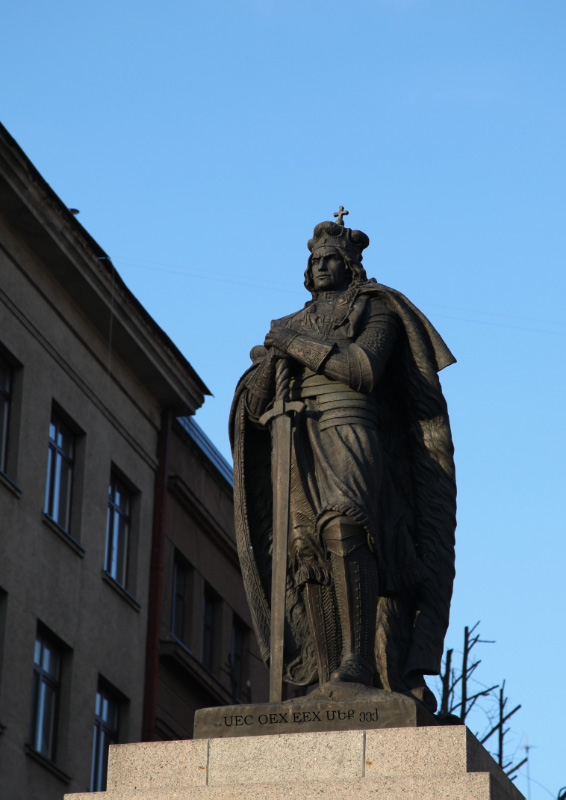
|
| |
|
| |
|
| |
|
| |
Both sons of Gediminas, Kęstutis and Algirdas were brothers and co-rulers of Lithuania from 1345 to 1377.
One of Kestutis' many children was Vytautas Magnus, depicted here in bronze monument in Kaunas.
One of Algirdas many childrend was Jogaila – Wladyslaw II Jagiello.
Thus Jogaila and Vytautas were first cousins, and also close childhood friends, but the warring machinations between them as adult rulers of Lithuania were very complicated. And consider, Jogaila, though the Christianizer of Lithuania and husband of Catholic Queen Saint Jadwiga of Poland, was willing in principal to ally with the Muslim Golden Horde against the Christian Moscovites in the Battle of Kulikovo Pole in 1380, true six years before his own baptism in 1386. Vytautas Magnus on the other hand, married his daughter and only child Sophia (1371–1453) to Василий I Дмитриевич – Vasilii I Dmitriyevich, Grand Prince of Moscow, and son of the hero of Kulikovo Pole, Orthodox Saint Dimitri Donskoi - Дмитрий Донской. Thus these two, Sophia and Vasilii I, became the parents of Василий II Васильевич Тёмный – Vasilii II, also called The Blind, Grand Prince of Moscow from 1425 to 1462, with Sophia serving as regent initially for her ten-year-old grand prince son. So this Vasilii II Vasiliyevich was the grandson of both Vytautas Magnus and Saint Dimitri Donskoi. Vasilii II's reign saw the break up of the Golden Horde into smaller Khanates, but also the Fall of Constantinople to the Turks — basically another Mongolic Muslim people — in 1453. Earlier in 1439, the Council of Florence had (sort of temporarily) ended the Great Schism between Orthodoxy (Constantinople) and Catholicism (Rome). And in 1448 Bishop Jonah became Metropolitan of Moscow and of All Russia, serving until his death in 1461, and effectively ushering in Moscow's Church autonomy from the Patriarchate of Constantinople. Vasilii II's son and successor, great grandson of Vytautas Magnus and of Saint Dimitri Donskoi, was Иван III Васильевич – Ivan III Vasiliyevich, known to history as Ivan the Great, who reigned from 5 April 1462 to 27 October 1505. With these events, and under Ivan III and Metropolitan Jonah, the notions of Moscovy's Grand Prince as Tsar and Moscow as the Third Rome were born. Quite a connection between Lithuania, and Lithuania's great national hero, Vytautas Magnus, and the now rather despised Russians. Perhaps all sides in this need to do some rethinking. |
|